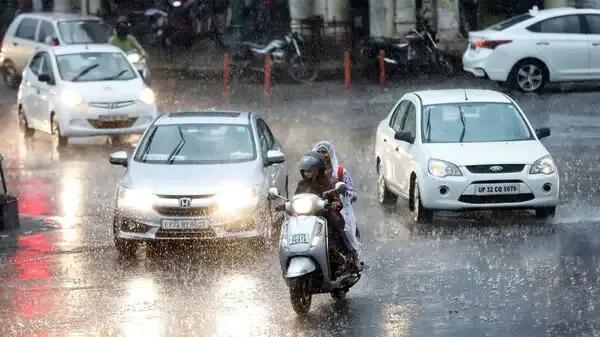New Delhi: India has received 20 per cent below normal rainfall since the start of the monsoon period on June 1, and overall precipitation for the entire month will also be subpar, the India Meteorological Department (IMD) has said.
After reaching the Indian mainland two days earlier than usual and swiftly covering many other states, the rain-bearing system made no significant progress between June 12 and 18, extending the wait for north India, which is reeling from a sweltering heat wave.
However, conditions are now favorable for further advancement of the monsoon into parts of Maharashtra, Chhattisgarh, Odisha, coastal Andhra Pradesh, northwest Bay of Bengal, Bihar and Jharkhand over the next three to four days, the weather department said.
India received 64.5 mm of rainfall between June 1 and 18 which is 20 per cent less than the long period average (LPA) of 80.6 mm, it said.
Since June 1, northwest India has recorded 10.2 mm of rainfall (70 per cent less than normal), central India 50.5 mm (31 per cent less than normal), the south peninsula 106.6 mm (16 per cent more than normal), and east and northeast India 146.7 mm (15 per cent less than normal).
The southwest monsoon advanced into parts of the Nicobar Islands on May 19. It subsequently covered most parts of the south and some parts of the central Bay of Bengal by May 26 along with Cyclone Remal.
It simultaneously reached Kerala and the northeastern states on May 30, two and six days earlier than normal, respectively.
By June 12, it had gradually covered the entire states of Kerala, Karnataka, Goa, Andhra Pradesh and Telangana; most parts of southern Maharashtra and some parts of southern Chhattisgarh and southern Odisha; and most parts of sub-Himalayan West Bengal, Sikkim and all northeastern states.
"Thereafter, the monsoon has not progressed, and its northern limit on June 18 passes through Navsari, Jalgaon, Amravati, Chandrapur, Bijapur, Sukma, Malkangiri, and Vizianagaram," the IMD said.
The IMD reported that 11 meteorological sub-divisions in the country have received normal to large excess rainfall between June 1 and 18 while 25 have experienced deficient to large deficient rainfall.
The forecast suggests that the average rainfall over the country in June is most likely to be below normal (less than 92 per cent of the LPA).
Normal to above-normal rainfall is expected in most areas of the southern peninsula and some parts of northeast India, while below-normal rainfall is anticipated in many areas of northwest and adjoining central India, as well as some parts of northeast India.
The IMD said in a May-end presser that the country could see above-normal rainfall in the four-month monsoon season (June to September) with cumulative rainfall estimated at 106 per cent of the LPA of 87 cm.
Below-normal monsoon rainfall is expected in northeast India, normal in the northwest and above-normal in central and south peninsular regions of the country.
India's core monsoon zone covering most of the rain-fed agriculture areas in the country is predicted to receive above-normal rainfall this season, the Met office said.
The monsoon is critical for India's agricultural landscape, with 52 per cent of the net cultivated area relying on it. It is also crucial for replenishing reservoirs critical for drinking water and power generation.
According to the Central Water Commission, water storage in 150 major reservoirs in India dropped to just 22 per cent of their live storage last week amid the prevailing heat wave, exacerbating water shortages in many states and significantly affecting hydropower generation.
June and July are considered the most important monsoon months for agriculture because most of the sowing for the Kharif crop takes place during this period.
El Nino conditions are prevailing at present and La Nina may set in by August-September, scientists said.
El Nino - the periodic warming of surface waters in the central Pacific Ocean - is associated with weaker monsoon winds and drier conditions in India. La Nina - the antithesis of El Nino - leads to plentiful rainfall during the monsoon season.
—PTI

